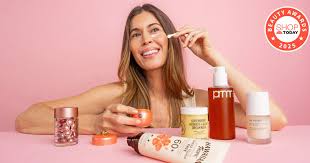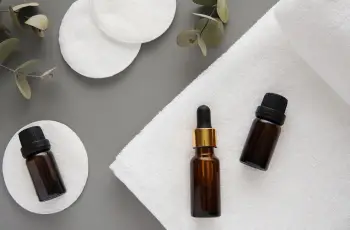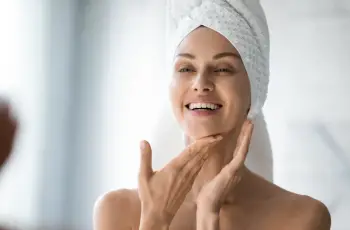
💸 How To Know If an Expensive Skincare Product Will Work for Your Skin: The Smart Shopper’s Guide to Beauty That Delivers
There’s a common assumption that the more expensive a skincare product is, the better it must perform—and that belief is one of the biggest myths in the beauty industry today.
While luxury creams and serums may come in beautiful packaging and boast a premium image, a hefty price tag does not always guarantee results for your skin.
Whether you’re chasing hydration, firmer skin, or relief from acne, it’s crucial to evaluate a product based on its formula—not its cost.
Marketing hype and gorgeous branding often play a much larger role in pricing than actual skincare benefits, which can lead to disappointment and wasted money.
Understanding what makes a product effective, and how to identify if it’s worth your investment, is key to building a routine that works for your unique skin.
🧴 Price Doesn’t Always Equal Performance
High prices are often driven by luxury branding, influencer marketing, and ornate packaging, not necessarily better ingredients or superior formulations.
A $250 serum might have the same active ingredients as a $25 one, but the former comes with extra costs like celebrity endorsements and high-end containers.
This is why many dermatologists and skincare experts recommend looking beyond the brand name or price and focusing on what’s inside the bottle.
The ingredient list, clinical backing, and real-world results are far more important than whether the product looks good on your bathroom shelf.
The smartest skincare shoppers know how to analyze what they’re buying, which can save both your skin and your bank account in the long run.
🔍 Read the Ingredient List Like a Pro
Skincare labels may seem like a jumble of complex words, but learning to read them can help you spot whether a product is worth the splurge.
Ingredients are listed in order of concentration, meaning the ones at the top make up most of the formula, while those at the bottom appear in trace amounts.
If an ingredient you’re excited about—like peptides, ceramides, or niacinamide—is buried at the end of the list, it may not be present in high enough concentration to be effective.
On the flip side, if you have sensitive skin and a known irritant appears at the top of the list, it’s best to avoid that product, no matter how many stars it has online.
Knowing how to spot effective concentrations allows you to separate hype from science and make better-informed decisions about where your money goes.
💧 Choose the Right Ingredients for Your Skin Type
Not all ingredients are universally beneficial—what works for one skin type might not work for another, especially when it comes to actives.
For dry skin, look for hydrating ingredients like hyaluronic acid, glycerin, squalane, and ceramides high up in the list to support the moisture barrier.
If you have oily or acne-prone skin, salicylic acid, niacinamide, and zinc can help regulate oil while calming inflammation and preventing clogged pores.
Mature skin may benefit from retinoids, peptides, and antioxidants that help with collagen production and reduce fine lines over time.
Finding a match between your skin’s needs and the product’s formulation is far more valuable than blindly trusting the price tag to deliver results.
🚫 Know Which Ingredients to Avoid
Equally important is recognizing ingredients that don’t work for your skin—or worse, cause irritation, breakouts, or dryness when used repeatedly.
If you’ve had past reactions to fragrances, essential oils, or certain alcohols, steer clear of products where those ingredients are listed at the top.
Some luxury formulations include exotic botanicals or proprietary blends with flashy names, but if they irritate your skin, the price isn’t worth it.
If a product contains too many potential irritants and not enough soothing or active components, it’s best to skip it—no matter how glamorous it seems.
📑 Don’t Rely on Buzzwords—Look for Proof
Terms like “clinically proven,” “dermatologist-tested,” or “instant results” are often tossed around in skincare marketing, but they don’t all mean the same thing.
Clinical trials provide the gold standard of proof that a skincare product actually performs in the way it claims to—measuring real, quantifiable results over time.
These tests are done under strict scientific conditions with measurable parameters such as skin elasticity, tone, hydration levels, and pigmentation.
When a brand backs its claims with well-executed clinical trials, it shows they’ve invested in testing, not just branding or influencer campaigns.
🧪 Understand the Difference Between Clinical Trials and Consumer Studies
Consumer perception studies often rely on self-reported opinions rather than measurable results, making them less reliable for true skincare effectiveness.
Statements like “93% of users felt their skin looked smoother” reflect how users felt, not whether their skin actually improved under clinical analysis.
On the other hand, clinical testing will report measurable changes like a 28% improvement in skin hydration or a 30% reduction in dark spots.
If you’re choosing between two products, the one with clinical evidence of improvement will likely give you better value, even if it costs less.
For cutting-edge ingredients or trendy formulas, having solid proof of performance is even more critical before making a pricey investment.
💡 Be Wary of Made-Up Ingredient Names
Sometimes luxury brands invent proprietary ingredient names to make their products sound high-tech or exclusive—but that doesn’t mean they’re effective.
Names like “WrinkleSmooth-X™” or “GlowFusion Complex®” are often trademarks for blends that may contain very basic ingredients under a fancy label.
If you can’t find scientific data or studies behind a trademarked ingredient, don’t assume it’s superior—check whether it actually contains proven actives.
Some brands inflate prices to match the exclusivity of these gimmicks, but the actual skin benefits may be minimal or completely unproven.
🧴 Don’t Be Afraid of Affordable Alternatives
Affordable skincare brands are becoming increasingly sophisticated and now offer powerful actives at a fraction of the cost of luxury lines.
Brands like The Ordinary, CeraVe, and La Roche-Posay offer dermatologist-recommended products backed by science without inflating the price.
Their formulas often include the same concentrations of ingredients you’d find in expensive versions—just without the celebrity ads or custom jars.
In many cases, the main difference between a $20 serum and a $200 one is the branding strategy and the extras, not necessarily the results.
📌 Ask Yourself What You’re Really Paying For
Before spending hundreds on a product, evaluate whether you’re paying for high-quality ingredients, or just a luxurious experience and packaging.
Luxury brands often invest heavily in fragrance, jar design, celebrity partnerships, and velvet-lined boxes—but do those extras actually improve your skin?
Sometimes you’re paying for the emotional appeal or status of the product rather than its effectiveness, which isn’t a smart trade if results are your priority.
Spend time researching ingredient concentrations, reviews, and clinical data instead of relying on visual appeal or social media trends.
🔬 Patch Test New Products—Even Expensive Ones
No matter the cost, every new product should be patch-tested on a small area before applying it to your whole face, especially if it contains active ingredients.
Even luxurious creams can cause breakouts, stinging, or allergic reactions depending on your skin’s sensitivities or other products in your routine.
Give your skin 24–48 hours to respond before fully incorporating a new serum or moisturizer, and avoid layering too many new products at once.
This habit protects your skin from damage and ensures that your investment isn’t wasted on something that doesn’t suit your skin.
🎯 Less Can Be More When It Comes to Skincare
Many people are tempted to believe that more products or pricier formulations mean better results, but the truth is that skin responds best to simplicity.
A basic routine of cleanser, targeted treatment, moisturizer, and SPF can dramatically improve your skin if the products are thoughtfully chosen.
More importantly, it gives your skin a chance to breathe and respond positively to the actives, rather than becoming overwhelmed or inflamed.
Cutting down your skincare spending and investing only in what truly works will yield better skin—and better value—for the long term.
✨ Final Thoughts: Smart Shopping Is Beautiful Skincare
Skincare that works is not about price—it’s about performance, ingredients, consistency, and how well a product supports your specific skin needs.
Learn to decode ingredient lists, seek out clinical proof, and ignore the flashy packaging designed to distract you from what really matters.
Before you add that $300 cream to your cart, ask yourself: is it scientifically backed, does it suit my skin type, and will it deliver on its promise?
When you buy skincare based on knowledge instead of hype, you’ll save money, avoid disappointment, and get glowing skin that lasts longer than any trend.


